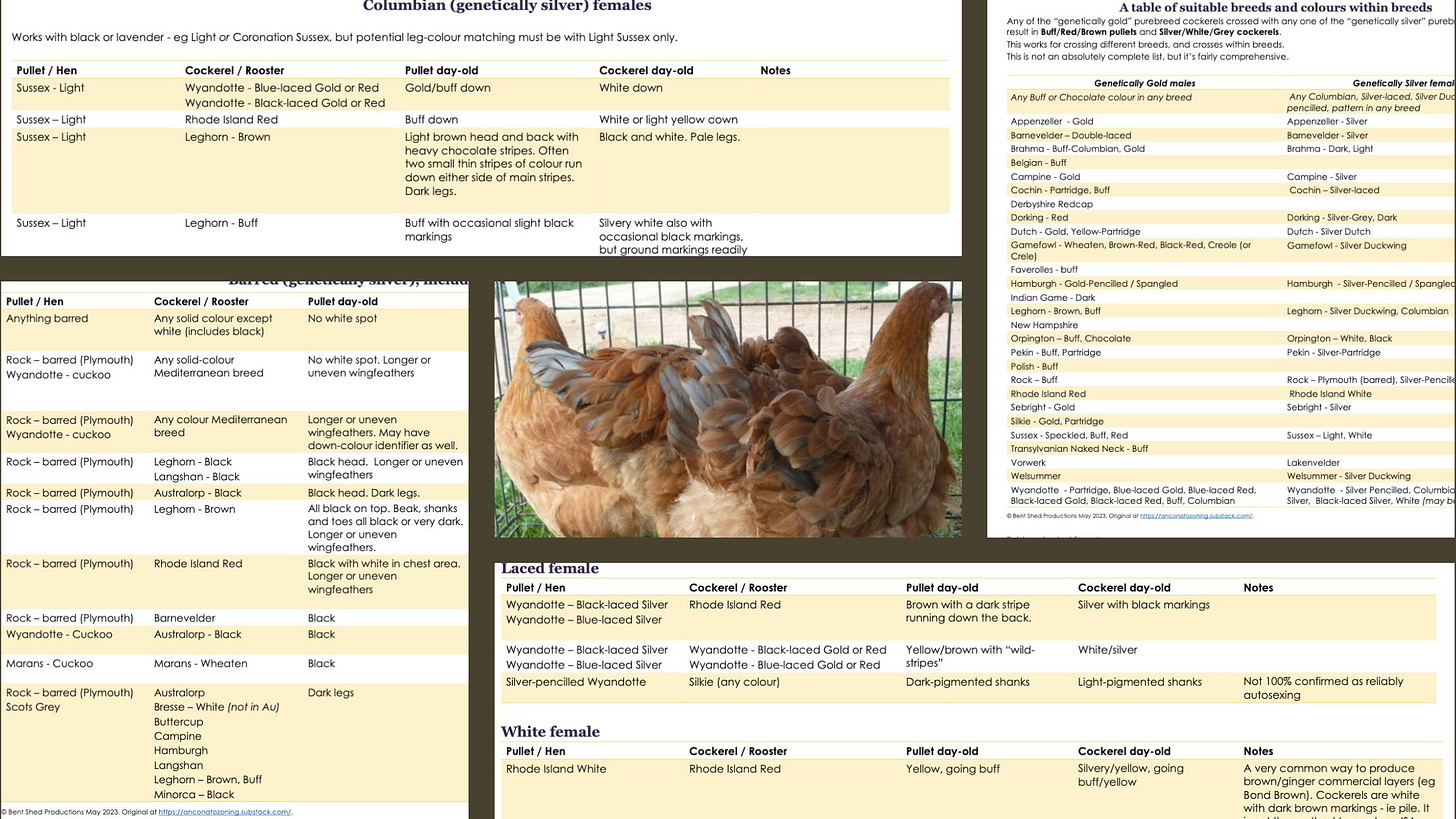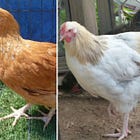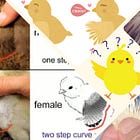This is Part 4 of the mega-article on Sex-linked breeding in poultry.
The previous parts are:
Part 4: Tables of sex-link crosses (this article)
And also see my article on Autosexing poultry breeds.
These tables list the confirmed and reliable matings and chick colours I’ve found during the course of researching. It doesn’t cover every breed or cross I’ve mentioned in my articles, or every breed that can produce a sex-linked cross.
It should, however, provide enough information for people to adapt for their own purposes.
Note that due to the vagaries of Substack, which doesn’t have the ability to create tables, I’ve created them as downloadable PDFs. The table images are linked to the PDF so you can download and print them for your own use; click on the image to open the PDF.
If you find them useful and wish to share, please reference them back to this Substack article: I’ve spent a lot of time on these!
Notes about terminology
The description of matings tends to be “Male over Female”. So “Brown Leghorn over Plymouth Rock” means “Brown Leghorn rooster crossed with Plymouth Rock hen”.
I’ve reversed the order in these tables as the hen/pullet colour is the really vital one, particular if the hen is barred. By doing this, and grouping it by hen colour/characteristics, we can clearly see how the patterns work.
The tables focus on the key day-old chick characteristics. Where known, adult colours are listed in “Notes”.
Contents
Barred females
Want more about barring in sex-linked poultry?
Gold over Silver

Want more about gold and silver in sex-link breeding?
Columbian females
This is a variant on a gold/silver pairing - Columbian is genetically silver. It works with black or lavender - eg Light or Coronation Sussex.
Laced and White females
This is a variant on a gold/silver pairing - Silver lacing, and some (but not all) White is genetically silver.
Feather-sexing crosses
Note: this can combine with down colour mixes.
Want more on slow- and fast-feathering breeding?
Other possible sex-linkages: leg colour
I came across a reference in a book by Katie Thear: “Incubation: a guide to hatching & rearing” (pp 73-75). She suggests that there are dark-legged males and pale-legged female pairings that will produce light-legged cockerels and dark-legged pullets. It seemed worth mentioning!
Want even more? Read the other articles in this series:
Part 4: Tables of sex-link crosses (this article)











